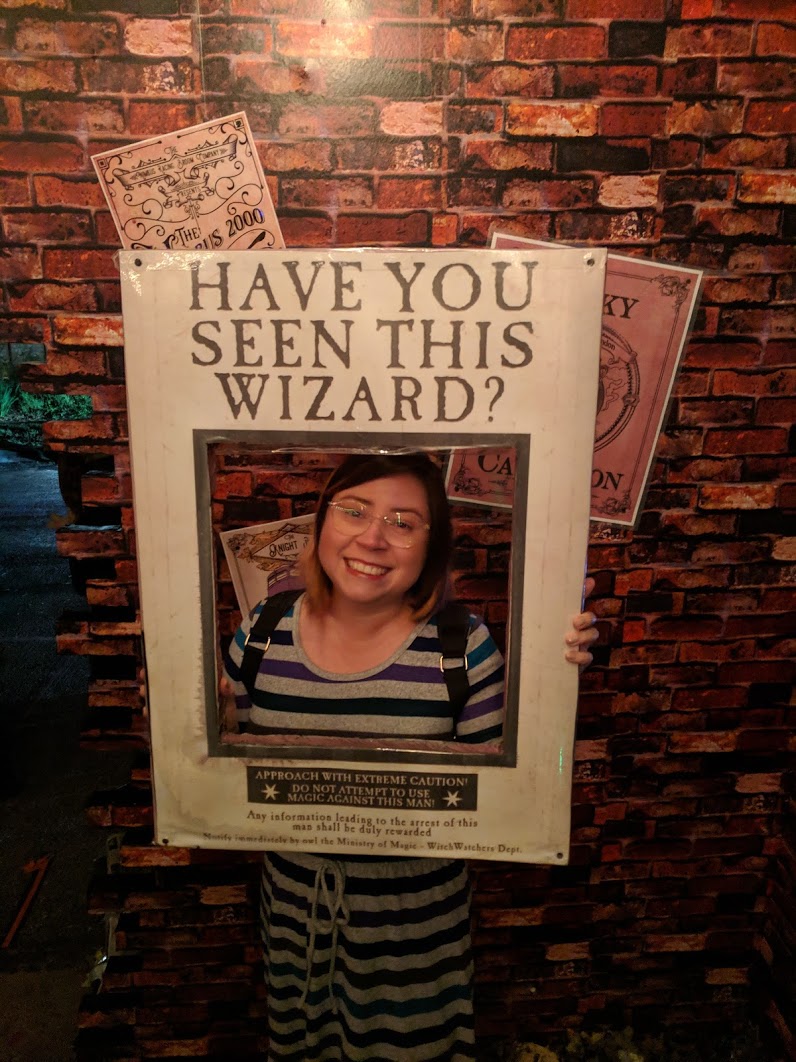In Episode 20, Cecy Correa (@cecycorrea on Twitter) draws on her training in marketing to share how to influence teams.
Episode References:
- The Psychology of Fake News (And What Tech Can Do About It): https://www.youtube.com/watch?v=2cVfYMxqZmI
- The Knowledge Illusion: https://www.worldcat.org/title/knowledge-illusion/oclc/1027527252/editions?editionsView=true
- Thinking Fast and Slow: https://www.worldcat.org/title/thinking-fast-and-slow/oclc/917473664
- Active Listening: https://en.wikipedia.org/wiki/Active_listening
Transcript
JENNIFER: Welcome to Storytime with Managers, a podcast by Cohere.
I’m Jennifer Tu, and I’m here with Cecy Correa to talk about how beliefs and feelings spread on a team. Cecy, can you tell us a little about yourself?
CECY: I am currently a software engineer working at Thinkful which is an online technology sort of bootcamp, where we teach people how to code. We also teach data science, data analytics and other stuff like that, to help people start a career in tech. But I actually come from a non-traditional background, my background is in traditional media, like radio, TV, and I also had a career in marketing prior to becoming a software engineer. So a lot of media sort of analysis is in my background.
JENNIFER: Yeah, and also knowing how to influence large groups of people, just like engineering leaders.
CECY: [Laughs] Yes, just like that. I think having a background in traditional media has been really interesting for my career, because I tend to always think about how media or things we consume, whether it’s news or a video, all of those things are framed by someone. They’re not always just reporting facts. Most of the times when you’re reading something online nowadays, it tends to be an editorial piece, a piece of media where someone is really just talking about their opinion and not necessarily something that’s backed with a lot of research.
JENNIFER: Let’s talk about that, because I really like this idea about framing and I want to figure out how we can re-contextualize this in engineering teams. One thing that I’ve seen and I’m sure many of you listening have seen before is when a team kind of latches on to an idea or a feeling or a belief together as a group. So maybe they all at once become convinced that, “Microservices are the only way to go. We have to rewrite our API in Haskell.” Or maybe they just get very anxious about this upcoming reorg or change in the company. Cecy, what I’m thinking about is I’m wondering how does this happen? Why do teams shift around like this? And then when it happens, how do we notice it happening before it gets kind of critical and then when we’ve noticed it, how do we influence it and reframe it, and give it that editorial perspective to shift people back onto the right track?
CECY: I think the first thing that’s very important is always question everything. And again, I think that comes from my background in media. So for example, when I was in high school – just to go back a little bit –
[Laughter]
CECY: When I was in high school, my English teacher taught, as part of her curriculum, media literacy. I don’t think that was formally part of the class, but she really taught us how to question everything. For example, you can have a photo as part of an article, and if it’s zoomed in in a certain way, it might make you think that there’s more people say at an event than it actually were. So, it’s all about that framing. So that was very much instilled in me very early on. Whatever you’re consuming, whatever you’re reading is very much from someone’s frame of reference. You can’t always just take it at face value, without really asking questions, and thinking critically and doing more research.
A lot of the times when you come across an article, you always want to look for other opinions. The way that I think about it is sometimes I might be on Stack Overflow looking for a solution to a bug that I’ve been dealing with, and often I think there’s some people that might take an answer from Stack Overflow and then just, “Okay, I’m going to go with this.” But I personally like to go and see other answers, like really dig through everything that’s out there and then I might actually end up creating my own solution based on all of the different things that I might have seen.
JENNIFER: Yeah, so that makes a lot of sense to me. And that’s a behavior that if I were leading a team, I would really want people on the team to exhibit. And I’m wondering, do you have any advice for how to help people when they aren’t doing that yet? And so, they’re just picking the first Google answer and saying, “This must be the way to do it.” How do you foster that sense of, “I need to find out more and make sure I’m getting a fuller picture,” and zoom out and see that the room is empty.
CECY: Yeah, it’s a learnt skill. One thing that I like to do is always look at the date when something was posted, which I think more people are doing nowadays. And you can go on Google, if you search for something. I think if you click on Advanced, you can filter and make sure that you’re only getting newer pieces. So I think it’s always important to try to see, put it in the context of when something was written. So I think that’s important to look at just from that sort of perspective of, “Okay, maybe this was written five years ago and there hasn’t been much activity since.” It’s kind of like picking a plug-in or in Ruby, a gem. You don’t want to necessarily go with whatever is the top example. You want to make sure there are several things that you look at. You want to see that it’s well-maintained, that the last commit was fairly recent. If it has test coverage, making sure that it has decent test coverage that the build is passing.
We are kind of trained to look at those things when we’re looking for something like a plug-in or a gem for our software, but we don’t always think about that in that way when we’re looking for an opinion on a particular piece of software or a tool we’re going to use or something like that.
JENNIFER: Oh, I really, really like that. What I like is the question that we’re trying to answer isn’t how might I teach someone on my team how to research ideas better, it’s how do I introduce to them the idea that finding context is the most impactful thing they can be doing.
CECY: Ooh, that’s a good question. I think the context is interesting. I think the context might vary from team-to-team in my opinion. For example, if we’re talking about, “Hey, the flavor of the month is this framework, everybody’s on it, it looks really cool. We should dump our entire architecture and go start rebuilding everything in this thing.” If you’re managing a team or you’re working within a team, being able to sort of push back and say, “Well, what value is this adding to our business,” is something that I’ve always felt was helpful. And as an engineer, receiving that piece of feedback, it kind of sucks because you always want to go maybe working with something that’s newer, fancier or perceivably faster, but always thinking about, “Well, what is this actually adding to the business that I’m working on?” I think that’s a good question to ask from that perspective.
JENNIFER: Yeah.
CECY: Some of my product managers will say like, if I was pitching moving to a new tool, or redoing – I’m always wanting to redo the website because there’s always a better frontend framework for it. It’s going to bring these positives. But in the end, is that framework going to help our end-customer and therefore, is it actually going to help the business? Like how can you actually make that claim up? That’s something that I find helpful. And I don’t know, if I find myself in the position to want to influence team members or a product manager or an engineering manager on a decision like that, I always try to step back and think from that perspective, of is this actually going to help the business, is this going to help the customer.
JENNIFER: Yeah, I really like that as a framing question of how does it help the people we most want to help. And one thing I noticed was you mentioned that sometimes when you’ve had this question asked to you, it feels kind of bad. And I’m wondering, when we ask this question to others, what can we do to get ahead of the fact that they might feel bad about it? Is there something we can do to smooth out those feelings so that way, we don’t dump them into this value of despair?
CECY: Yeah, I think a lot of that is how you deliver the message. I think the biggest thing is that people want to feel heard, they don’t want to feel out right dismissed. So being able to always repeat back what someone said is a strategy that I think works well because you’re saying, “I am hearing you, I understand what you’re saying. It’s valid, it’s important, but let’s think about it this way.” So, at least, starting from that frame of reference, that yes, I did listen, I’m listening. I think it’s called active listening.
JENNIFER: Yeah.
CECY: Actually, my last job had a class on active listening. So if it’s something that you are interested in enacting in your team, I believe there are folks who specialize in providing that sort of training for teams. Another very interesting training is masterful conversations, which was also a required training at my last job. It’s not always the sort of training that companies make required. But I find it really good for having those conversations especially when people disagree, being able to have those conversations in a way that’s productive. I wish that I could remember some of those things a little bit better that I could distill. I think that once you received the training, those things kind of become sort of like part of you. But trying to perhaps either looking for resources for someone that can bring that training to your team could be helpful in having those conversations in a way that’s productive.
JENNIFER: Great, you know what I kind of want to dig into it is I want to ask you more about active listening and editorial framing, because one thing I’m thinking about is sometimes if I repeat something someone else says in a group, it sounds like I might be agreeing with them and I might be reinforcing the thing that I don’t want to reinforce. And so, one thing I’m wondering is when we want to shift what a group of people is thinking, how do we do active listening, so that way, the person feels heard and validated while shifting the conversation and the group sentiment in the direction we wanted to go.
CECY: One thing with active listening that I really like – actually one of my co-workers, a few jobs ago, did this and she was so good at it, and I kind of incorporated that or tried to incorporate that into my own work communication is always saying, “What I’m hearing you say,” or, “What I heard you say.” Sometimes that can feel a little bit weird to say, “What I’m hearing you say…” But another phrase that she used that I thought was really good was, “Okay, let me repeat back what you just said.” And it feels more like you’re not necessarily agreeing but you’re just stating, “This is what I heard.” I think it also helps people hear back what they said.
JENNIFER: Yeah, and then it gives them this opportunity to say, “Yes,” because they can say, “Yes, you heard me correctly.” “Yes, you’ve got this right.”
CECY: Yes. And I think that the conversation can either move in a different direction, especially if they say yes, but also it can help someone definitely understand. Especially if you’re in a conversation where you feel like it’s not necessarily going anywhere, I think it’s helpful when you say something like that. Like, “This is what I’m hearing.” “What I heard you say.” “Let me repeat this right back to you.” I think that that gives someone maybe an opportunity to really listen to what they’re saying and they might either say, “Yes, you’re right,” or they might say, “No, this is really more what I mean.” So I think that it can help a little bit.
JENNIFER: All right. So, when you’re trying to shift a person or a group of people, start by reflecting back and making sure that they know that their concerns have been heard. What do you do next from there? How do you go from that to taking them in the direction you want them to go?
CECY: It’s not something that might happen in just one conversation. A lot of the times, people might have a certain belief. And once someone has a belief, it really becomes a part of them. And those beliefs can be really hard to just change. Often, when you have a belief and you’re presented with data that might challenge that belief, that sort of data becomes really hard for us to digest.
So if you’re having a conversation with someone about why this framework is better than this other one, and you’re finding that this other person is just really sticking to their love for this tool or framework or what have you, even if you keep presenting them with data that might suggest that something else is out there that’s better, that data, again because it’s challenging a belief, that data can just be outright really difficult for someone to consume. So, this kind of gets back to this idea that beliefs are just hard to change.
So this also gets back to a greater sort of conversation that’s happening in tech, which is fake news. And if someone sees a story that’s fake, it’s a lot harder to get people to believe once they are presented with data that says, “No, the story was fake. It is proven that it’s fake.” There are sites dedicated to disproving fake facts or news out in the internet, right? So even when you show someone, “Hey this is irrefutable proof that this is fake,” people might still have a hard time really accepting that. That’s because beliefs are sort of stored in a part of us that it’s almost like unlearning a behavior.
This is stuff that I dug into for my talk of Psychology of Fake News. There’s a great book –
JENNIFER: A fantastic talk, by the way.
CECY: Thank you. And there’s a really good book called Thinking Fast and Slow that a lot of people are fans of. I highly recommend it. And part of what the author is discussing in this book is that beliefs are such a part of us, and that’s why they’re sort of stored in the same part of the brain that things that we do innately are stored and that’s why it can be so hard to try to get someone to not necessarily unlearn a belief, but stop holding on to it. So it’s like akin to riding a bike or driving. Those things that come to you, it’s called I think the lizard brain. So the things are sort of in your lizard brain and that just kind of come to you. That’s where beliefs are. So that’s why it’s so hard to change someone’s mind once they believe in something. So when you present to them information, they have to process that with their more analytical brain, and that part of the brain takes more resources. This is also why some people feel really drained after the entire day they haven’t eaten and you also start feeling it in your brain. Like if you’ve been thinking a lot and you haven’t eaten, it’s almost like a bad mix.
I think the other sort of analogy that I’ve heard people use is if you say you give up sugar, and it’s easier towards the beginning of the day, and towards the end of the day, especially if your coworkers are bringing in donuts and cookies and things like that. So you have sort of like a meter of how much you can actually resist and that gets depleted the more you use it throughout the day. And it’s the same thing with our analytical part of our brain. So when people are presenting you with facts to try to get you to change your mind on a belief, you’re spending that sort of analytical brains. And there’s only sort of like so many resources that you can dedicate to that. So a lot of the times people, when you give someone an article that says, “Hey, take a look at this. This talks about whatever it is that we’re discussing,” sometimes people might not read it right away, and they’ll save it for later because, I don’t know if you’ve ever kind of found yourself –
JENNIFER: Oh, that’s me. I’ve kind of got like 200 tabs open right now.
CECY: Yeah, because you’re like, “Oh well, I can’t really digest this right now,” so you save it for later. And often, this happens in conversations when you’re trying to change someone’s mind. It’s just plain difficult to do.
JENNIFER: What do you do then? Because what you have to do is to show data and that’s the exact thing that someone can’t take. What do you do?
CECY: Yeah, that is a really good question. I think the best thing you can do as someone that’s trying to work on something like this is just to understand how the mind works. And obviously, you can’t. We’re not psychologists, we’re not going to be experts at this but just having an understanding that that’s how the brain works and that it’s difficult to process certain information, especially if that information is contrary to what someone might believe. I think just having that understanding helps.
JENNIFER: Oh man, okay. Yes, because what I’m hearing is, what we need is to build empathy. And one aspect of that is to understand how brains work and to empathize with how hard it is to change a belief because of how our brains work.
CECY: Yeah, absolutely. Another thing that I think is interesting, and again it comes from sort of understanding how the mind works. There’s another book that I referenced in my talk about fake news, it’s called The Knowledge Illusion. In that book, they talk about how you actually get someone to change a belief. And most of the times, it comes with experience. So there were some studies that were done. So if someone was asked to draw a bicycle from memory, so they would first ask them how much do you know bikes? And then they would draw a bike, and then they would experience how hard it actually is to recall the different things from memory. So they experienced not necessarily a failure, but they experienced their lack of knowledge. So then at the end of the exercise, the folks running the study will ask them again, “How well do you think you know bikes?” And then people usually rated their knowledge a little bit lower. So the only thing that got them to realize that their own gauge of their own knowledge was off was by experiencing sort of that struggle.
So, I’m not saying you should run experiments on your coworkers or employees, but I am saying that sometimes what it takes is that experience for someone to really think, “Oh, okay. Now I see things in a different light.”
JENNIFER: Wow, this is amazing, and we are also out of time. Cecy, any final words of advice for our listeners that you want to add on?
CECY: I would just say definitely check out things like Thinking Fast and Slow. It’s a great book. It talks a lot about just how the brain works and how beliefs are made. And obviously the author, I’m not going to butcher his name, but if you just Google Thinking Fast and Slow, the author does a much better job at talking about all of this stuff.
And then also The Knowledge Illusion is also a great book that talks a lot about how knowledge – not necessarily how knowledge is formed, but also how people perceive knowledge. And I think those books would be really helpful in trying to understand how to navigate those conversations around team beliefs or knowledge that you might have in a team.
JENNIFER: Awesome. And Cecy, if people want to ask you more questions, continue the conversation here, what’s the best way for them to reach out to you?
CECY: Twitter definitely is the best way. I’m @cecycorrea. And yeah, you can have a conversation with me. I’m fairly active on Twitter, except for weekends. I try to give myself a break from social media on weekends as well as vacation and stuff like that. Essentially Twitter, I treat it as like a secondary work communication avenue, so I’m usually there during business hours just to keep up with news and things like that.
JENNIFER: That’s great. Thanks so much for talking with me about all of this today.
CECY: Yeah, thanks for having me. It’s great talking with you.
JENNIFER: Thanks for listening to Storytime with Managers by Cohere. I’m Jennifer Tu. Our theme music is by Kevin MacLeod and we are edited by Mandy Moore and the DevReps crew.
If you like this episode, please think about leaving us a review on your favorite podcast listening platform. This can make a really big difference in helping other people find and start listening to Storytime with Managers. Thanks so much.



